Liquid Crystal Display Device
LI; Xuefeng ; et al.
U.S. patent application number 16/108330 was filed with the patent office on 2019-11-21 for liquid crystal display device. This patent application is currently assigned to SHIJIAZHUANG CHENGZHI YONGHUA DISPLAY MATERIAL CO., LTD.. The applicant listed for this patent is SHIJIAZHUANG CHENGZHI YONGHUA DISPLAY MATERIAL CO., LTD.. Invention is credited to Qing CUI, Lihong GUI, Xuefeng LI, Zhengqiang LI, Yunxia QIAO, Kelun SHU, Wenxiao XING, Kai XU, Qian ZHANG.
| Application Number | 20190353963 16/108330 |
| Document ID | / |
| Family ID | 68533629 |
| Filed Date | 2019-11-21 |






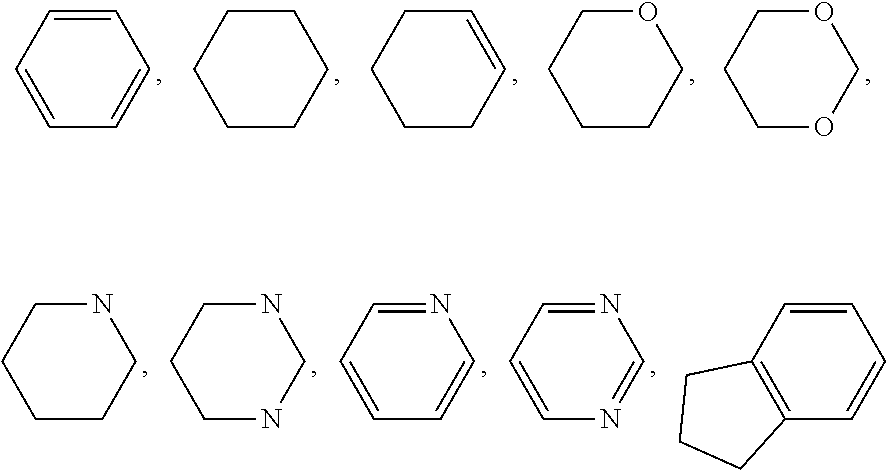

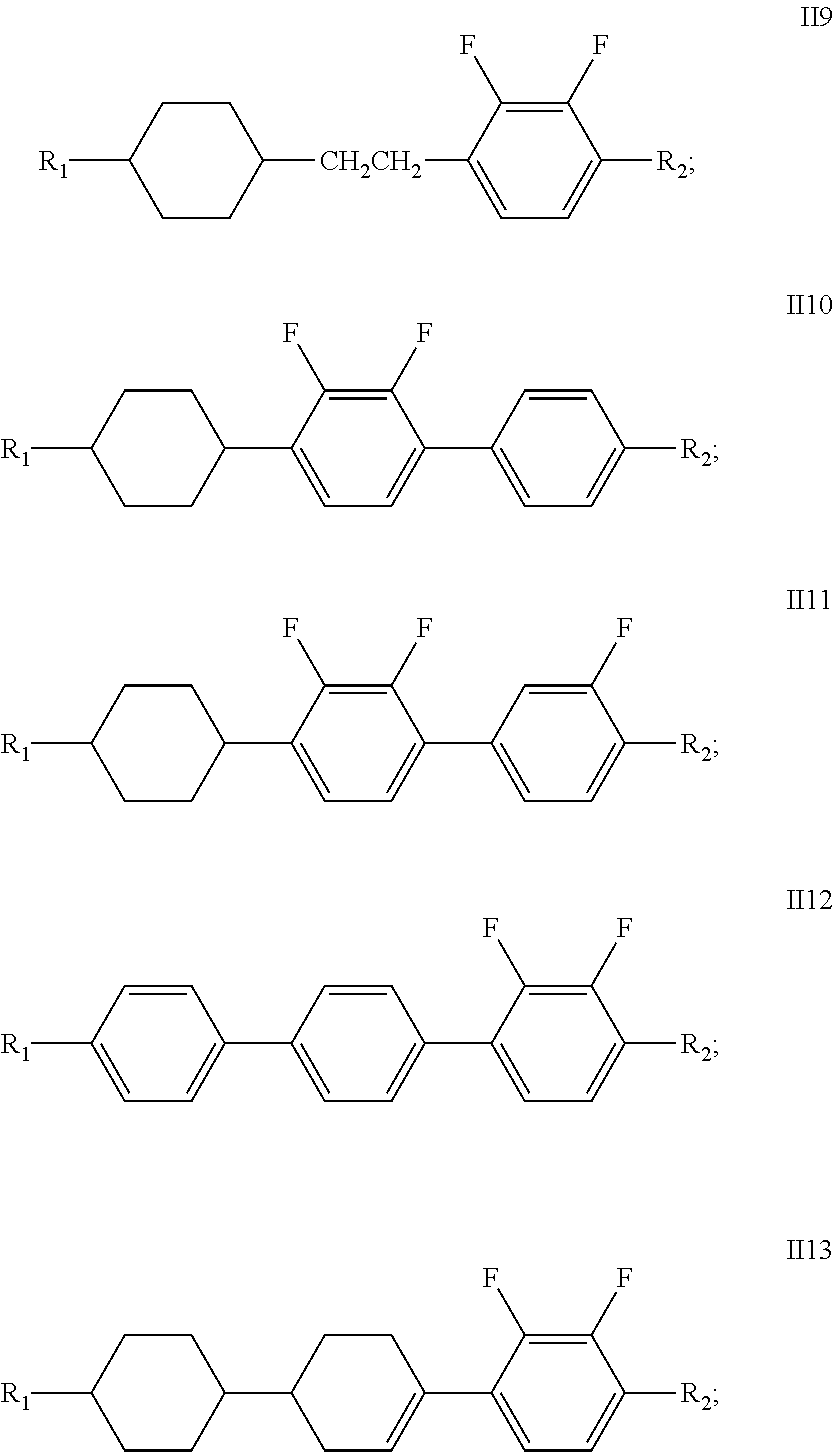



View All Diagrams
| United States Patent Application | 20190353963 |
| Kind Code | A1 |
| LI; Xuefeng ; et al. | November 21, 2019 |
LIQUID CRYSTAL DISPLAY DEVICE
Abstract
Disclosed is a liquid crystal display device comprising an array substrate and an opposite substrate arranged facing the array substrate, wherein the structure of said array substrate comprises elongated and evenly spaced slit electrodes and electrode gaps between the slit electrodes, and said opposite substrate comprises a bulk electrode; and further comprises a liquid crystal composition between said array substrate and the opposite substrate. The liquid crystal display device has a higher light transmittance, such that more backlight passes through the liquid crystal display device, resulting in the liquid crystal display device having a higher luminance.
| Inventors: | LI; Xuefeng; (Shijiazhuang City, CN) ; SHU; Kelun; (Shijiazhuang City, CN) ; XU; Kai; (Shijiazhuang City, CN) ; GUI; Lihong; (Shijiazhuang City, CN) ; ZHANG; Qian; (Shijiazhuang City, CN) ; LI; Zhengqiang; (Shijiazhuang City, CN) ; QIAO; Yunxia; (Shijiazhuang City, CN) ; CUI; Qing; (Shijiazhuang City, CN) ; XING; Wenxiao; (Shijiazhuang City, CN) | ||||||||||
| Applicant: |
|
||||||||||
|---|---|---|---|---|---|---|---|---|---|---|---|
| Assignee: | SHIJIAZHUANG CHENGZHI YONGHUA
DISPLAY MATERIAL CO., LTD. Shijiazhuang City CN |
||||||||||
| Family ID: | 68533629 | ||||||||||
| Appl. No.: | 16/108330 | ||||||||||
| Filed: | August 22, 2018 |
| Current U.S. Class: | 1/1 |
| Current CPC Class: | C09K 2019/301 20130101; C09K 2019/3036 20130101; C09K 19/3066 20130101; C09K 2019/3422 20130101; C09K 2019/0466 20130101; C09K 19/3494 20130101; C09K 19/20 20130101; C09K 2019/3425 20130101; C09K 2019/3027 20130101; H01L 27/1214 20130101; H01L 27/124 20130101; C09K 19/32 20130101; C09K 2019/3021 20130101; C09K 2019/3408 20130101; C09K 19/3491 20130101; C09K 19/44 20130101; C09K 2019/123 20130101; C09K 2019/3009 20130101; C09K 2019/3016 20130101; C09K 2019/3004 20130101; G02F 1/133707 20130101 |
| International Class: | G02F 1/1337 20060101 G02F001/1337; C09K 19/20 20060101 C09K019/20; C09K 19/30 20060101 C09K019/30; C09K 19/44 20060101 C09K019/44 |
Foreign Application Data
| Date | Code | Application Number |
|---|---|---|
| May 18, 2018 | CN | 201810481490.X |
Claims
1. A liquid crystal display device comprising an array substrate and an opposite substrate arranged facing the array substrate, characterized in that the structure of said array substrate comprises elongated and equidistant arrayed slit electrodes and electrode gaps between the slit electrodes, and said opposite substrate comprises a bulk electrode; and further comprises a liquid crystal composition between said array substrate and the opposite substrate.
2. The liquid crystal display device according to claim 1, characterized in that the ratio of the width of said slit electrode to the width of said electrode gap is 1:0.5 to 1:9.
3. The liquid crystal display device according to claim 1, characterized in that the ratio of the width of said slit electrode to the width of said electrode gap is 1:0.5 to 1:2.
4. The liquid crystal display device according to claim 1, characterized in that said liquid crystal composition comprises one or more compounds represented by formula I, and one or more compounds represented by formula II: ##STR00039## wherein A represents a group having a dielectric constant of greater than 0, and B represents a group having a dielectric constant of less than 0; R.sub.0 represents one or more of CF.sub.2O, OCF.sub.2, OCF.sub.2O, CHFO, OCHF, OCHFO, CF.sub.2, CHF, CH.sub.2, CH.sub.2CH.sub.2, CHFCH.sub.2, CH.sub.2CHF, CHFCHF, CF.sub.2CH.sub.2, CH.sub.2CF.sub.2, CF.sub.2CHF, CHFCF.sub.2, CF.sub.2CF.sub.2, CHCH, CFCH, CHCF, CFCF, Si, N, O, S, CR*.sub.2CR**.sub.2, CR*FCR**.sub.2, CR*.sub.2CR**F, CR*FCR**F, CF.sub.2CR**.sub.2, CR*.sub.2CF.sub.2, CF.sub.2CR**F, CR*FCF.sub.2, CR*CR**, CFCR**, CR*CF, ##STR00040## and/or any fluorobenzene; R* and R** each independently represent H, an alkyl group having a carbon atom number of 1-10, an alkoxy group having a carbon atom number of 1-10, an alkenyl group having a carbon atom number of 2-10, or an alkenoxy group having a carbon atom number of 3-8; R.sub.1 and R.sub.2 each independently represent an alkyl group having a carbon atom number of 1-10, fluoro, a fluoro-substituted alkyl group having a carbon atom number of 1-10, an alkoxy group having a carbon atom number of 1-10, a fluoro-substituted alkoxy group having a carbon atom number of 1-10, an alkenyl group having a carbon atom number of 2-10, a fluoro-substituted alkenyl group having a carbon atom number of 2-10, an alkenoxy group having a carbon atom number of 3-8 or a fluoro-substituted alkenoxy group having a carbon atom number of 3-8, and any one or more CH.sub.2 in the groups represented by R.sub.1 and R.sub.2 may be substituted with cyclopentyl, cyclobutyl or cyclopropyl; Z.sub.1 and Z.sub.2 each independently represent a single bond, --CH.sub.2CH.sub.2-- or --CH.sub.2O--; ##STR00041## and each independently represent one or more of ##STR00042## m represents 1, 2 or 3; and n represents 0 or 1.
5. The liquid crystal display device according to claim 4, characterized in that said one or more compounds represented by formula I are selected from one or more of compounds represented by formulae I1 to 13 below, and said one or more compounds represented by formula II are selected from one or more of compounds represented by formulae II1 to II13 below: ##STR00043## ##STR00044## wherein R.sub.1, R.sub.2, R.sub.3 and R.sub.4 each independently represent an alkyl group having a carbon atom number of 1-10, fluoro, a fluoro-substituted alkyl group having a carbon atom number of 1-10, an alkoxy group having a carbon atom number of 1-10, a fluoro-substituted alkoxy group having a carbon atom number of 1-10, an alkenyl group having a carbon atom number of 2-10, a fluoro-substituted alkenyl group having a carbon atom number of 2-10, an alkenoxy group having a carbon atom number of 3-8 or a fluoro-substituted alkenoxy group having a carbon atom number of 3-8, and any one or more CH.sub.2 in the groups represented by R.sub.1, R.sub.2, R.sub.3 and R.sub.4 may be substituted with cyclopentyl, cyclobutyl or cyclopropyl; ##STR00045## each independently represent one or more of ##STR00046## and any fluorobenzene; each X independently represents CH.sub.2, O or S; p represents 1, 2 or 3; and q represents 0, 1 or 2.
6. The liquid crystal display device according to claim 5, characterized in that said compound represented by formula I1 is selected from one of compounds represented by formulae I1-1 to I1-4 below, said compound represented by formula I2 is selected from one of compounds represented by formulae I2-1 to I2-8 below, and said compound represented by formula I3 is selected from one of compounds represented by formulae I3-1 to I3-8 below, ##STR00047## ##STR00048## ##STR00049## ##STR00050## wherein R.sub.3 and R.sub.4 each independently represent an alkyl group having a carbon atom number of 1-10, fluoro, a fluoro-substituted alkyl group having a carbon atom number of 1-10, an alkoxy group having a carbon atom number of 1-10, a fluoro-substituted alkoxy group having a carbon atom number of 1-10, an alkenyl group having a carbon atom number of 2-10, a fluoro-substituted alkenyl group having a carbon atom number of 2-10, an alkenoxy group having a carbon atom number of 3-8 or a fluoro-substituted alkenoxy group having a carbon atom number of 3-8, and any one or more CH.sub.2 in the groups represented by R.sub.3 and R.sub.4 may be substituted with cyclopentyl, cyclobutyl or cyclopropyl; and each X independently represents CH.sub.2, O or S.
7. The liquid crystal display device according to claim 4, characterized in that said liquid crystal composition further comprises one or more compounds represented by formula III ##STR00051## wherein R.sub.5 and R.sub.6 each independently represent an alkyl group having a carbon atom number of 1-10, an alkoxy group having a carbon atom number of 1-10, an alkenyl group having a carbon atom number of 2-10 or an alkenoxy group having a carbon atom number of 3-8, and any one or more non-connected CH.sub.2 in the groups represented by R.sub.5 and R.sub.6 may be substituted with cyclopentyl, cyclobutyl, cyclopropyl, or --O--; ##STR00052## represents one or more of ##STR00053## or any fluorobenzene; and w represents 1, 2 or 3.
8. The liquid crystal display device according to claim 7, characterized in that said one or more compounds represented by formula III are one or more of compounds represented by formulae III-1 to III-5 below: ##STR00054## wherein R.sub.51 and R.sub.61 each independently represent an alkyl group having a carbon atom number of 1-6, an alkoxy group having a carbon atom number of 1-6, an alkenyl group having a carbon atom number of 2-6 or an alkenoxy group having a carbon atom number of 3-6.
Description
TECHNICAL FIELD
[0001] The present invention relates to the technical field of liquid crystal displays. More specifically, the present invention relates to a liquid crystal display device.
BACKGROUND ART
[0002] At present, the expansion of application range of liquid crystal compounds becomes larger and larger, and the liquid crystal compounds can be used in various types of displays, electro-optical devices, sensors and the like. There are a great variety of liquid crystal compounds used in the above-mentioned display field, wherein nematic liquid crystals are used most extensively. Nematic phase liquid crystals have been used in passive TN and STN matrix displays and systems having a TFT active matrix.
[0003] With regard to the application field of thin film transistor techniques (TFT-LCD), although the market in recent years has become very huge, and the techniques also become gradually mature, requirements of display techniques are increasing continuously, especially in terms of achieving a quick response, reducing the drive voltage for reducing power consumption, etc. Liquid crystal materials, as one of the important optoelectronic materials for liquid crystal displays, play an important role in improving the performance of a liquid crystal display.
[0004] As liquid crystal materials, they need to have good chemical and thermal stability and stability to electric fields and electromagnetic radiations. Moreover, as liquid crystal materials used for thin film transistor techniques (TFT-LCD), they not only need to have the stabilities as mentioned above, but also should have properties, such as a broader nematic phase temperature range, a suitable birefringence anisotropy, a very high electrical resistivity, a good ultraviolet resistant property, a high charge retention rate, a low vapor pressure, etc.
[0005] As for dynamic picture display applications, the liquid crystal is required to have a very fast response speed in order to eliminate ghosting and trailing of display pictures, and therefore the liquid crystal is required to have a lower rotary viscosity .gamma..sub.1; in addition, as for portable devices, in order to reduce the energy consumption of equipment, the driving voltage for the liquid crystal is desired to be as low as possible; and as for displays for use in televisions, etc., the requirements for the drive voltage for the liquid crystal are not as low as that.
[0006] The viscosity, in particular rotary viscosity .gamma..sub.1, of a liquid crystal compound directly affects the response time after the liquid crystal is energized, and both the rise time (t.sub.on) and fall time (t.sub.off) are proportional to the rotary viscosity .gamma..sub.1 of the liquid crystal; moreover, since the rise time (t.sub.on) is related to a liquid crystal cell and the drive voltage, same can be adjusted by increasing the drive voltage and reducing the thickness of the liquid crystal cell; however, the fall time (t.sub.off) is irrelevant to the drive voltage, and is mainly related to the elastic constant of the liquid crystal and the thickness of the liquid crystal cell, and thinning of cell thickness can result in a decrease in the fall time (t.sub.off); moreover, the movement manners of liquid crystal molecules in different display modes are different, and the three modes, i.e., TN, IPS and VA, are respectively inversely proportional to the mean elastic constant K, twist elastic constant and bend elastic constant.
[0007] According to the continuum theory of liquid crystal, a variety of different liquid crystals deformed under the action of an external force (an electric field, a magnetic field) can "rebound" back to the original shapes by intermolecular interactions; likewise, liquid crystals also form a "viscosity" due to the intermolecular force. Small changes of liquid crystal molecules may result in obvious changes in the conventional parameter performance of the liquid crystal, wherein for some of these changes, there is a certain rule, while for some changes, it is difficult to find a rule, which may also have obvious effects on the intermolecular interaction of the liquid crystal, these effects are very subtle, and to date, no perfect theoretical explanation has been formed yet.
[0008] The viscosity of a liquid crystal is related to the molecular structure of the liquid crystal, and studying the relationship between the viscosity of a liquid crystal system formed from different liquid crystal molecules and the molecular structures of the liquid crystals is one of important tasks of liquid crystal formulation engineers.
[0009] The reason why a liquid crystal display panel has a high energy consumption is that only about 5% of backlight can transmit through a display device and then be captured by human eyes, while most of the light is "wasted". If a liquid crystal having a high light transmittance can be developed, then the backlight intensity can be reduced, thereby achieving the purpose of saving energy consumption and extending the service time of a device.
[0010] Therefore, there is a need to provide a new liquid crystal display device.
SUMMARY OF THE INVENTION
[0011] The object of the present invention is to provide a liquid crystal display device, which has the characteristics of a high light transmittance, a high luminance, and saving energy.
[0012] In order to achieve the above-mentioned objective, the following technical solution is used in the present invention:
[0013] A liquid crystal display device comprising an array substrate and an opposite substrate arranged facing the array substrate, characterized in that the structure of said array substrate comprises elongated and equidistant arrayed slit electrodes and electrode gaps between the slit electrodes, and said opposite substrate comprises a bulk electrode; and further comprises a liquid crystal composition between the array substrate and the opposite substrate.
[0014] Preferably, the ratio of the width of said slit electrode to the width of said electrode gap is 1:0.5 to 1:9.
[0015] Preferably, the ratio of the width of said slit electrode to the width of said electrode gap is 1:0.5 to 1:2.
[0016] Preferably, said liquid crystal composition comprises one or more compounds represented by formula I, and one or more compounds represented by formula II:
A-R.sub.0--B I;
##STR00001##
[0017] wherein
[0018] A represents a group having a dielectric constant of greater than 0, and B represents a group having a dielectric constant of less than 0;
[0019] R.sub.0 represents one or more of CF.sub.2O, OCF.sub.2, OCF.sub.2O, CHFO, OCHF, OCHFO, CF.sub.2, CHF, CH.sub.2, CH.sub.2CH.sub.2, CHFCH.sub.2, CH.sub.2CHF, CHFCHF, CF.sub.2CH.sub.2, CH.sub.2CF.sub.2, CF.sub.2CHF, CHFCF.sub.2, CF.sub.2CF.sub.2, CHCH, CFCH, CHCF, CFCF, Si, N, O, S, CR*.sub.2CR**.sub.2, CR*FCR**.sub.2, CR*.sub.2CR**F, CR*FCR**F, CF.sub.2CR**.sub.2, CR*.sub.2CF.sub.2, CF.sub.2CR**F, CR*FCF.sub.2, CR*CR**, CFCR**, CR*CF,
##STR00002##
and/or any fluorobenzene;
[0020] R* and R** each independently represent H, an alkyl group having a carbon atom number of 1-10, an alkoxy group having a carbon atom number of 1-10, an alkenyl group having a carbon atom number of 2-10, or an alkenoxy group having a carbon atom number of 3-8;
[0021] R.sub.1 and R.sub.2 each independently represent an alkyl group having a carbon atom number of 1-10, fluoro, a fluoro-substituted alkyl group having a carbon atom number of 1-10, an alkoxy group having a carbon atom number of 1-10, a fluoro-substituted alkoxy group having a carbon atom number of 1-10, an alkenyl group having a carbon atom number of 2-10, a fluoro-substituted alkenyl group having a carbon atom number of 2-10, an alkenoxy group having a carbon atom number of 3-8 or a fluoro-substituted alkenoxy group having a carbon atom number of 3-8, and any one or more CH.sub.2 in the groups represented by R.sub.1 and R.sub.2 may be substituted with cyclopentyl, cyclobutyl or cyclopropyl;
[0022] Z.sub.1 and Z.sub.2 each independently represent a single bond, --CH.sub.2CH.sub.2-- or --CH.sub.2O--;
##STR00003##
and each independently represent one or more of
##STR00004##
[0023] m represents 1, 2 or 3; and
[0024] n represents 0 or 1.
[0025] Preferably, A represents a group represented by formula V. and B represents one of groups represented by formulae VI1 to VI3;
##STR00005##
[0026] wherein
[0027] R.sub.3 and R.sub.4 represent an alkyl group having a carbon atom number of 1-10, fluoro, a fluoro-substituted alkyl group having a carbon atom number of 1-10, an alkoxy group having a carbon atom number of 1-10, a fluoro-substituted alkoxy group having a carbon atom number of 1-10, an alkenyl group having a carbon atom number of 2-10, a fluoro-substituted alkenyl group having a carbon atom number of 2-10, an alkenoxy group having a carbon atom number of 3-8 or a fluoro-substituted alkenoxy group having a carbon atom number of 3-8, and any one or more CH.sub.2 in the groups represented by R.sub.3 and R.sub.4 may be substituted with cyclopentyl, cyclobutyl or cyclopropyl;
##STR00006##
and each independently represent one or more of
##STR00007##
and any fluorobenzene;
[0028] each X independently represents CH.sub.2, O or S;
[0029] p represents 1, 2 or 3;
[0030] and q represents 0, 1 or 2.
[0031] Preferably, said one or more compounds represented by formula I are selected from one or more of compounds represented by formulae I1 to I3 below, and said one or more compounds represented by formula II are selected from one or more of compounds represented by formulae II1 to II13 below:
##STR00008## ##STR00009##
[0032] wherein
[0033] R.sub.1, R.sub.2, R.sub.3 and R.sub.4 each independently represent an alkyl group having a carbon atom number of 1-10, fluoro, a fluoro-substituted alkyl group having a carbon atom number of 1-10, an alkoxy group having a carbon atom number of 1-10, a fluoro-substituted alkoxy group having a carbon atom number of 1-10, an alkenyl group having a carbon atom number of 2-10, a fluoro-substituted alkenyl group having a carbon atom number of 2-10, an alkenoxy group having a carbon atom number of 3-8 or a fluoro-substituted alkenoxy group having a carbon atom number of 3-8, and any one or more CH.sub.2 in the groups represented by R.sub.1, R.sub.2, R.sub.3 and R.sub.4 may be substituted with cyclopentyl, cyclobutyl or cyclopropyl;
##STR00010##
and each independently represent one or more of
##STR00011##
and any fluorobenzene;
[0034] each X independently represents CH.sub.2, O or S;
[0035] p represents 1, 2 or 3;
[0036] and q represents 0, 1 or 2.
[0037] Preferably, said compound represented by formula I1 is selected from one of compounds represented by formulae I1-1 to I1-4 below, said compound represented by formula I2 is selected from one of compounds represented by formulae I2-1 to I2-8 below and said compound represented by formula I3 is selected from one of compounds represented by formulae I3-1 to I3-8 below,
##STR00012## ##STR00013## ##STR00014## ##STR00015##
[0038] wherein R.sub.3 and R.sub.4 each independently represent an alkyl group having a carbon atom number of 1-10, fluoro, a fluoro-substituted alkyl group having a carbon atom number of 1-10, an alkoxy group having a carbon atom number of 1-10, a fluoro-substituted alkoxy group having a carbon atom number of 1-10, an alkenyl group having a carbon atom number of 2-10, a fluoro-substituted alkenyl group having a carbon atom number of 2-10, an alkenoxy group having a carbon atom number of 3-8 or a fluoro-substituted alkenoxy group having a carbon atom number of 3-8, and any one or more CH.sub.2 in the groups represented by R.sub.3 and R.sub.4 may be substituted with cyclopentyl, cyclobutyl or cyclopropyl;
[0039] and each X independently represents CH.sub.2, O or S.
[0040] Preferably, said liquid crystal composition further comprises one or more compounds represented by formula III:
##STR00016##
[0041] wherein
[0042] R.sub.5 and R.sub.6 each independently represent an alkyl group having a carbon atom number of 1-10, an alkoxy group having a carbon atom number of 1-10, an alkenyl group having a carbon atom number of 2-10 or an alkenoxy group having a carbon atom number of 3-8, and any one or more non-connected CH.sub.2 in the groups represented by R.sub.5 and R.sub.6 may be substituted with cyclopentyl, cyclobutyl, cyclopropyl, or --O--;
##STR00017##
represents one or more of
##STR00018##
or any fluorobenzene;
[0043] and w represents 1, 2 or 3.
[0044] Preferably, said one or more compounds represented by formula III are one or more of compounds represented by formulae III-1 to III-8 below:
##STR00019##
[0045] wherein
[0046] R.sub.51 and R.sub.61 each independently represent an alkyl group having a carbon atom number of 1-6, an alkoxy group having a carbon atom number of 1-6, an alkenyl group having a carbon atom number of 2-6 or an alkenoxy group having a carbon atom number of 3-6.
[0047] The present invention has the following beneficial effects:
[0048] Compared with the prior art, the liquid crystal display device provided by the present invention has a higher light transmittance, such that more backlight passes through the liquid crystal display device, resulting in the liquid crystal display device having a higher luminance. Alternatively, due to the increase in transmittance, using less backlight can achieve the same luminance as that in the prior art, and less backlight means lower power consumption. That is to say, the liquid crystal display device provided by the present invention has a higher luminance or has the effect of energy saving and power saving.
BRIEF DESCRIPTION OF THE DRAWINGS
[0049] The particular embodiments of the present invention will be further described below in detail in conjunction with the drawings.
[0050] FIG. 1 shows a structural schematic diagram of a liquid crystal display panel provided in an embodiment of the present invention.
[0051] FIG. 2 shows a schematic diagram of a liquid crystal alignment direction provided in an embodiment of the present invention.
[0052] FIG. 3 shows a schematic diagram of improved light transmittance provided in an embodiment of the present invention.
DETAILED DESCRIPTION OF EMBODIMENTS
[0053] In order to illustrate the present invention more clearly, the present invention will be further described below in conjunction with preferred embodiments and the accompanying drawings. In the drawings, like parts are represented by the same reference sign. A person skilled in the art would understand that the following contents described in detail are illustrative rather than limiting, and should not limit the scope of protection of the present invention.
[0054] In this description, unless otherwise specified, percentages are weight percentages, temperatures are in degree Celsius (.degree. C.), and the specific meanings of the other symbols and the test conditions are as follows:
[0055] w represents the width of the slit electrodes;
[0056] d represents the width of the electrode gaps between the slit electrodes;
[0057] Cp represents the clearing point of the liquid crystal (.degree. C.), as measured by means of a DSC quantitative method;
[0058] .DELTA.n represents the optical anisotropy, n.sub.o is the refractive index of an ordinary light, n.sub.e is the refractive index of an extraordinary light, and the test conditions are: 25.+-.2.degree. C., 589 nm and using an abbe refractometer for testing;
[0059] .DELTA..epsilon. represents the dielectric anisotropy, .DELTA..epsilon.=.epsilon..parallel..sub.-.epsilon..sub..perp., wherein the .epsilon..sub..parallel. is a dielectric constant parallel to a molecular axis, and .epsilon..sub..perp. is a dielectric constant perpendicular to the molecular axis, and the test conditions are: 25.+-.0.5.degree. C., using a 20 micron parallel cell, and using INSTEC: ALCT-IR1 for testing;
[0060] .gamma.1 represents a rotary viscosity (mPas), and the test conditions are: 25.+-.0.5.degree. C., using a 20 micron parallel cell, and using INSTEC: ALCT-IR1 for testing; and
[0061] Tr (%) represents a transmittance, Tr (%)=100%*bright state (Vop) luminance/light source luminance, the test equipment is DMS501, and the test conditions are 25.+-.0.5.degree. C.; since .epsilon..sub..perp. positively correlated with Tr, when inspecting the transmittance, c can be used as an inspection indicator to testify.
[0062] In the embodiments of the present invention, liquid crystal monomer structures are represented by codes, wherein the codes of cyclic structures, end groups and linking groups of liquid crystals are represented, as shown in tables 1 and 2 below.
TABLE-US-00001 TABLE 1 Corresponding code for ring structure Ring structure Corresponding code ##STR00020## C ##STR00021## P ##STR00022## G ##STR00023## U ##STR00024## GI ##STR00025## Y ##STR00026## PI ##STR00027## HHPY ##STR00028## N ##STR00029## M ##STR00030## A ##STR00031## D ##STR00032## BHHO-m-nFF ##STR00033## DFDBF-m-m ##STR00034## B(S)
TABLE-US-00002 TABLE 2 Corresponding code for end group and linking group End group and linking group Corresponding code C.sub.nH.sub.2n+1-- n- C.sub.nH.sub.2n+1O-- nO- --OCF.sub.3 OT --CF.sub.3 -T --CF.sub.2O-- Q --F --F --CN --N --CH.sub.2CH.sub.2-- E --CH.dbd.CH-- V --C.ident.C-- T --COO-- Z --CH.dbd.CH--C.sub.nH.sub.2n+1 -Vn ##STR00035## C(5) ##STR00036## C(4) ##STR00037## C(3)1
EXAMPLES
##STR00038##
[0064] The following specific embodiments are used to illustrate the present invention. The liquid crystal compositions provided in the embodiments of the present invention can be produced using a method of mixing liquid crystal compounds, e.g., a method of mixing different components at a high temperature and dissolving same in each other, and the liquid crystal compositions provided in the embodiments of the present invention may also be prepared according to other conventional methods, e.g., heating, ultrasonic wavesuspension and so on. The above-mentioned methods are all conventional methods, unless otherwise specified. The raw materials for preparing the liquid crystal compositions are all available from public commercial approaches, unless otherwise specified.
Example 1
[0065] In this example, the width of the slit electrodes is designed to be 4 .mu.m, the electrode gap is designed to be 2 .mu.m, and the ratio of the width of the slit electrode to the width of the electrode gap is 1:0.5.
[0066] The formulation of the liquid crystal composition and the design of the liquid crystal display device are as shown in table 3 below.
TABLE-US-00003 TABLE 3 Formulation of liquid crystal composition and design of liquid crystal display device of Example 1 Category Liquid crystal monomer code Content (%) III 3-CC-V 28.00 III 3-CC-V1 10.00 III 3-CC-5 4.00 II 2-CCOY-O2 10.00 II 3-CCOY-O2 10.00 II 4-CCOY-O2 10.00 I DFDBF-Cp1O-O4 2.00 I DFDBF-Cp1O-O5 2.50 I 3-PUQY-O2 5.00 I 3-PUQY-O4 4.50 II 2-PYP-1Cpr 6.00 I BHHO-Cp1O-O4FF 8.00 d = 4 .mu.m w = 2 .mu.m .DELTA..epsilon. [1 KHz, 25.degree. C.]: -3.83 .epsilon..sub..perp.: 7.86 .DELTA.n [589 nm, 25.degree. C.]: 0.1006 Cp: 84.6.degree. C. .gamma..sub.1 [25.degree. C.]: 128 m Pa s.
Example 2
[0067] In this example, the width of the slit electrodes is designed to be 3 .mu.m, the electrode gap is designed to be 6 .mu.m, and the ratio of the width of the slit electrode to the width of the electrode gap is 1:2.
[0068] The formulation of the liquid crystal composition and the design of the liquid crystal display device are as shown in table 4 below.
TABLE-US-00004 TABLE 4 Formulation of liquid crystal composition of and design of liquid crystal display device Example 2 Category Liquid crystal monomer code Content (%) III 3-CC-V 42.00 III 3CC--V1 9.00 III 3-CPP-2V1 9.00 II 2-CCOY-O2 5.00 II 3-CCOY-O2 6.00 II 4-CCOY-O2 5.00 I DFDBF-Cp1O-O4 4.00 I DFDBF-Cp1O-O5 4.00 I 3-PUQY-O2 6.50 I 3-PUQY-O4 6.50 I PGUQY-3-O2 3.00 d = 3 .mu.m w = 6 .mu.m .DELTA..epsilon. [1 KHz, 25.degree. C.]: -1.89 .epsilon..sub..perp.: 5.78 .DELTA.n [589 nm, 25.degree. C.]: 0.0995 Cp: 81.9.degree. C. .gamma..sub.1 [25.degree. C.]: 78 m Pa s.
Comparative Example 1
[0069] In this comparative example, the width of the slit electrodes is designed to be 3 .mu.m, and the electrode gap is designed to be 3.5 .mu.m.
[0070] The formulation of the liquid crystal composition and the design of the liquid crystal display device are as shown in table 5 below.
TABLE-US-00005 TABLE 5 Formulation of liquid crystal composition and design of liquid crystal display device of Comparative Example 1 Category Liquid crystal monomer code Content (%) III 3-CC-V 28.00 III 3-CC-V1 10.00 III 3-CC-5 4.00 II 2-CCOY-O2 10.00 II 3-CCOY-O2 10.00 II 4-CCOY-O2 10.00 I DFDBF-Cp1O-O4 2.00 I DFDBF-Cp1O-O5 2.50 I 3-PUQY-O2 5.00 I 3-PUQY-O4 4.50 II 2-PYP-1Cpr 6.00 I BHHO-Cp1O-O4FF 8.00 d = 3 .mu.m w = 3.5 .mu.m .DELTA..epsilon. [1 KHz, 25.degree. C.]: -3.87 .epsilon..sub..perp.: 7.55 .DELTA.n [589 nm, 25.degree. C.]: 0.1032 Cp: 84.9.degree. C. .gamma..sub.1 [25.degree. C.]: 100 m Pa s.
Comparative Example 2
[0071] In this comparative example, the width of the slit electrodes is designed to be 3 .mu.m, and the electrode gap is designed to be 3.5 .mu.m.
[0072] The formulation of the liquid crystal composition and the design of the liquid crystal display device are as shown in table 6 below.
TABLE-US-00006 TABLE 6 Formulation of liquid crystal composition and design of liquid crystal display device of Comparative Example 2 Category Liquid crystal monomer code Content (%) III 3-CPP-2 3.00 III CPP-3-2-V1 9.00 III 3-CC-V 42.00 III 3-CC-V1 9.00 II 2-CCOY-O2 5.00 II 3-CCOY-O2 6.00 II 3-CCOY-O2 5.00 I DFDBF-Cp1O-O4 4.00 I DFDBF-Cp1O-O5 4.00 II 5-PP-O2 6.50 II 2-PYP-1Cpr 6.50 d = 4 .mu.m w = 2 .mu.m .DELTA..epsilon. [1 KHz, 25.degree. C.]: -1.78 .epsilon..sub..perp.: 5.00 .DELTA.n [589 nm, 25.degree. C.]: 0.1027 Cp: 80.9.degree. C. .gamma..sub.1 [25.degree. C.]: 58 m Pa s.
[0073] In Example 1 and Comparative Example 1 the same liquid crystal composition is used, but different liquid crystal display device design schemes are used; and in Example 1 and Comparative Example 2, the same liquid crystal display device design scheme is used, but different liquid crystal compositions are used. The above-mentioned examples and comparative examples are subjected to transmission testing: At a working voltage equal to 6 V, the transmittance of Example 1 is higher than that of Comparative Example 1 by about 3.0%, and at a working voltage equal to 10 V, the transmittance of Example 2 is higher than that of Comparative Example 2 by about 4.0%. By using the liquid crystal composition provided by the present invention to work with a liquid crystal display device, a higher transmittance is obtained, so that the liquid crystal display device achieves the effect of having a higher luminance or the effect of energy saving and power saving.
[0074] FIG. 1 is a schematic diagram of a liquid crystal display panel provided in an 0.0 embodiment of the present invention, which mainly comprises: a liquid crystal composition 21, an array substrate 22 and an opposite substrate 23 arranged facing the array substrate. Specifically, the array substrate 22 comprises a first transparent substrate 221, and slit electrodes 222 for applying a voltage; and the opposite substrate 23 comprises a second transparent substrate 231, and a bulk electrode 232 for applying a voltage.
[0075] As shown in FIG. 2, unlike the comparative examples, the liquid crystal compositions of the examples have a better alignment direction under the action of an electric field, and the alignment direction thereof more tends to be horizontal, which improves the deflection effect of the liquid crystal on light.
[0076] As shown in FIG. 3, on the basis of FIG. 2, it is indicated in further detail that there are different transmittances at different positions of the slit electrode structure; in the position where the transmittance of the comparative example is lower, the example has a higher transmittance; overall, the example achieves a higher transmittance.
[0077] Obviously, the above-mentioned embodiments of the present invention are merely examples for clearly illustrating the present invention, rather than limiting the embodiments of the present invention; for a person of ordinary skill in the art, other variations or changes in different forms may also be made on the basis of the above description, all the embodiments cannot be provided exhaustively herein, and any obvious variation or change derived from the technical solution of the present invention is still within the scope of protection of the present invention.
* * * * *














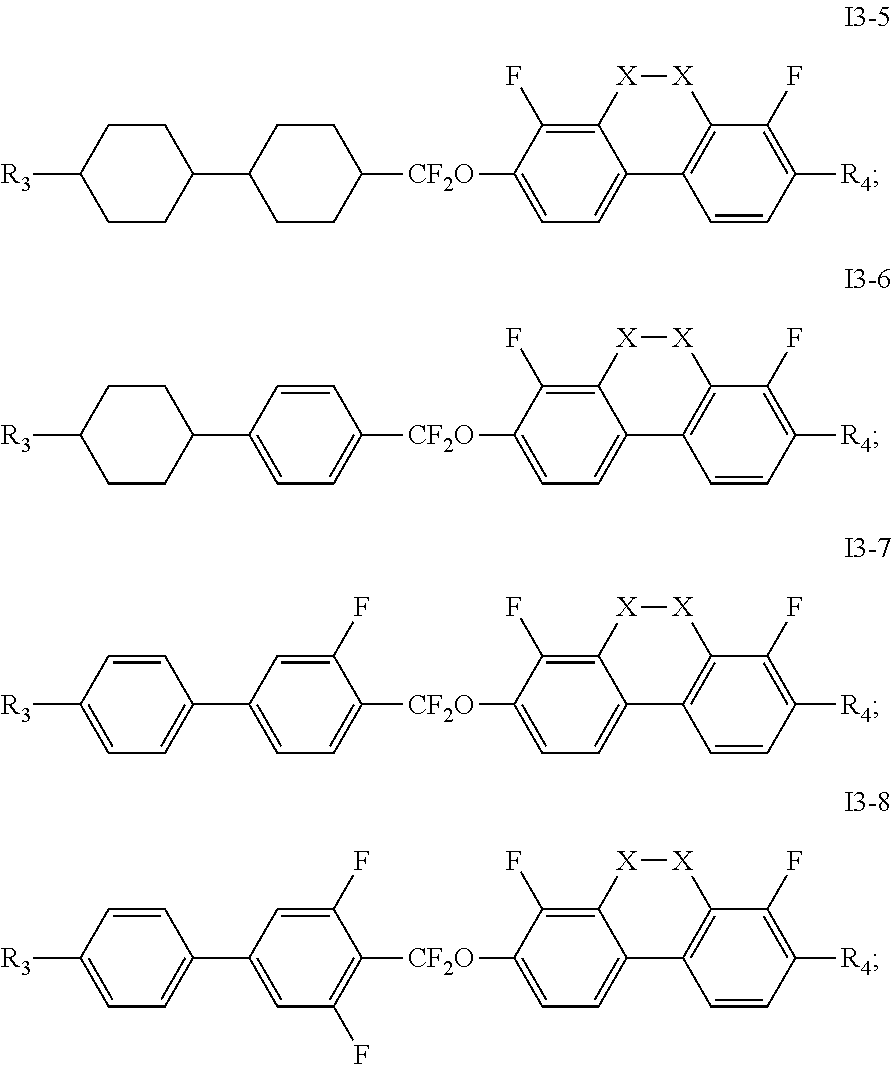









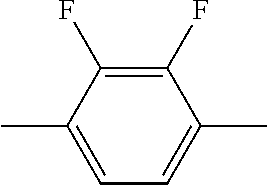




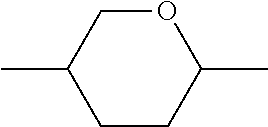


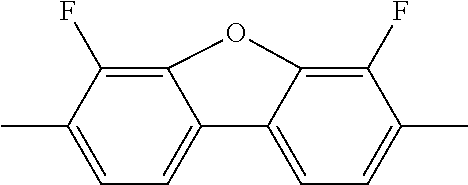
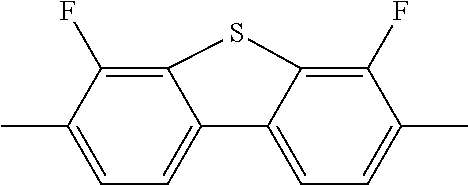
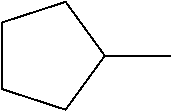

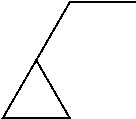
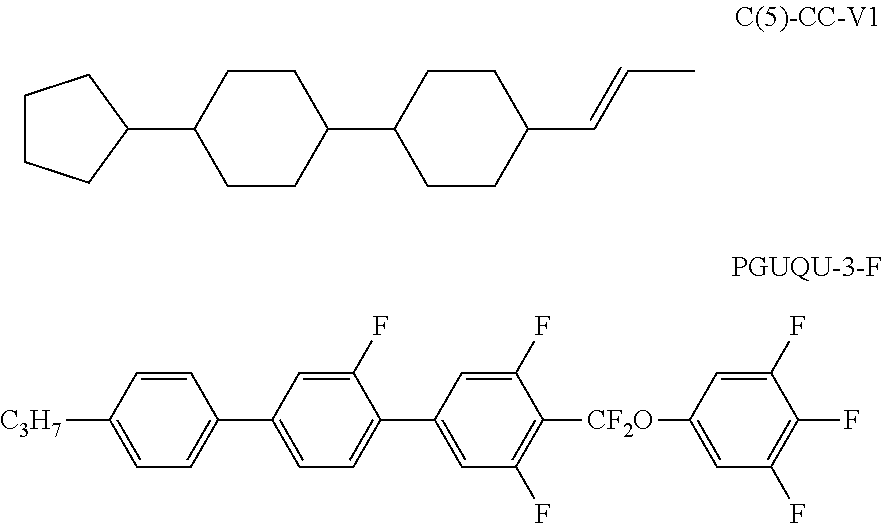










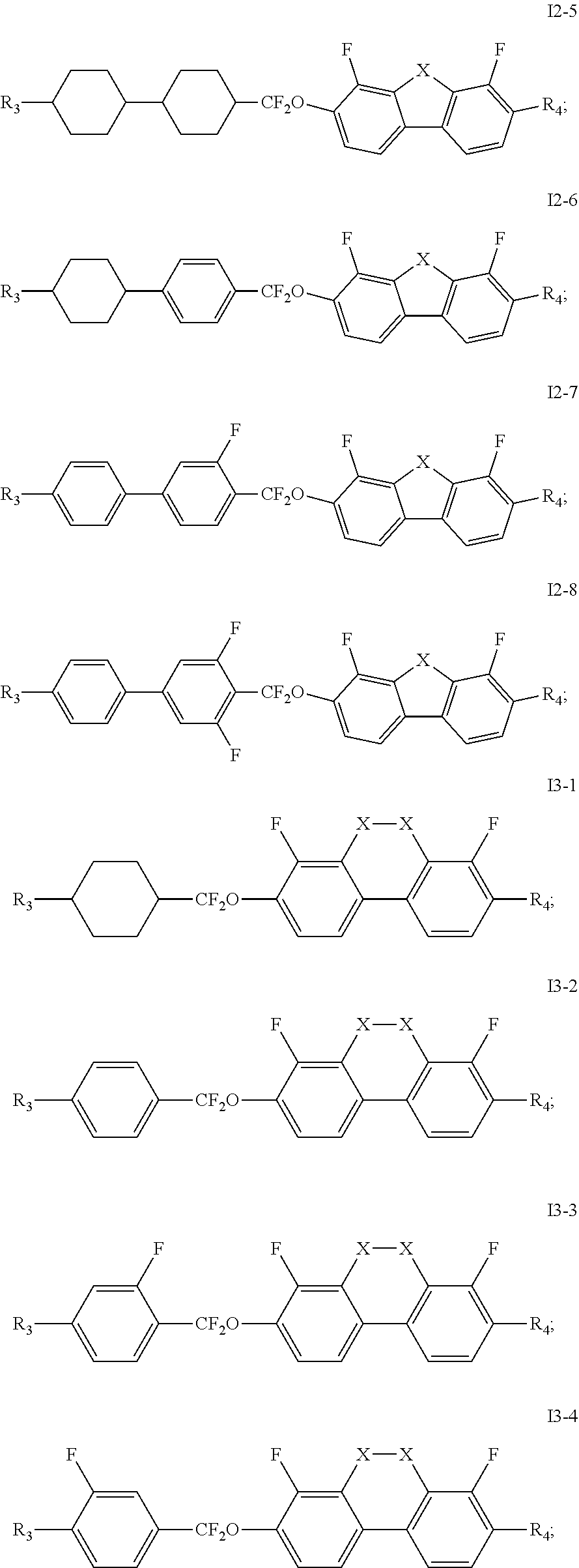
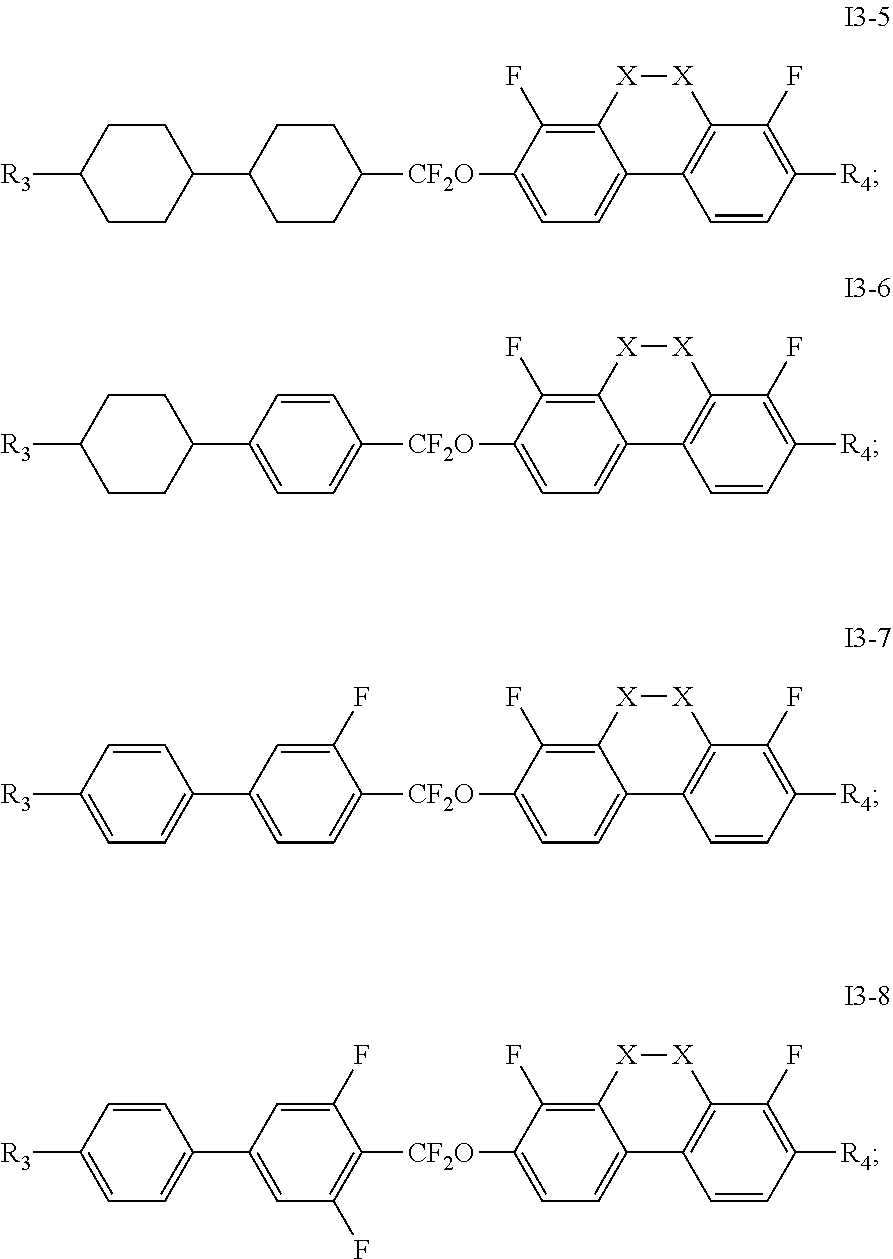



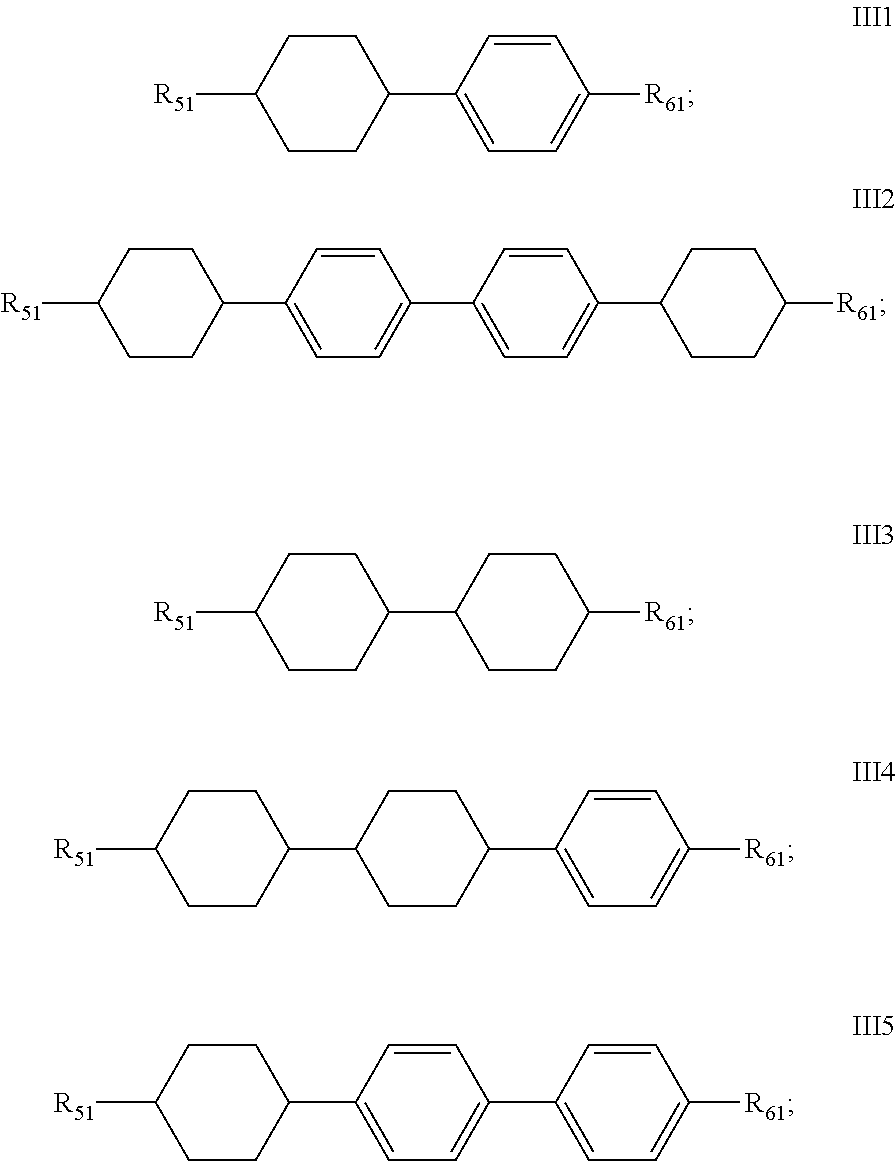
D00000

D00001

D00002
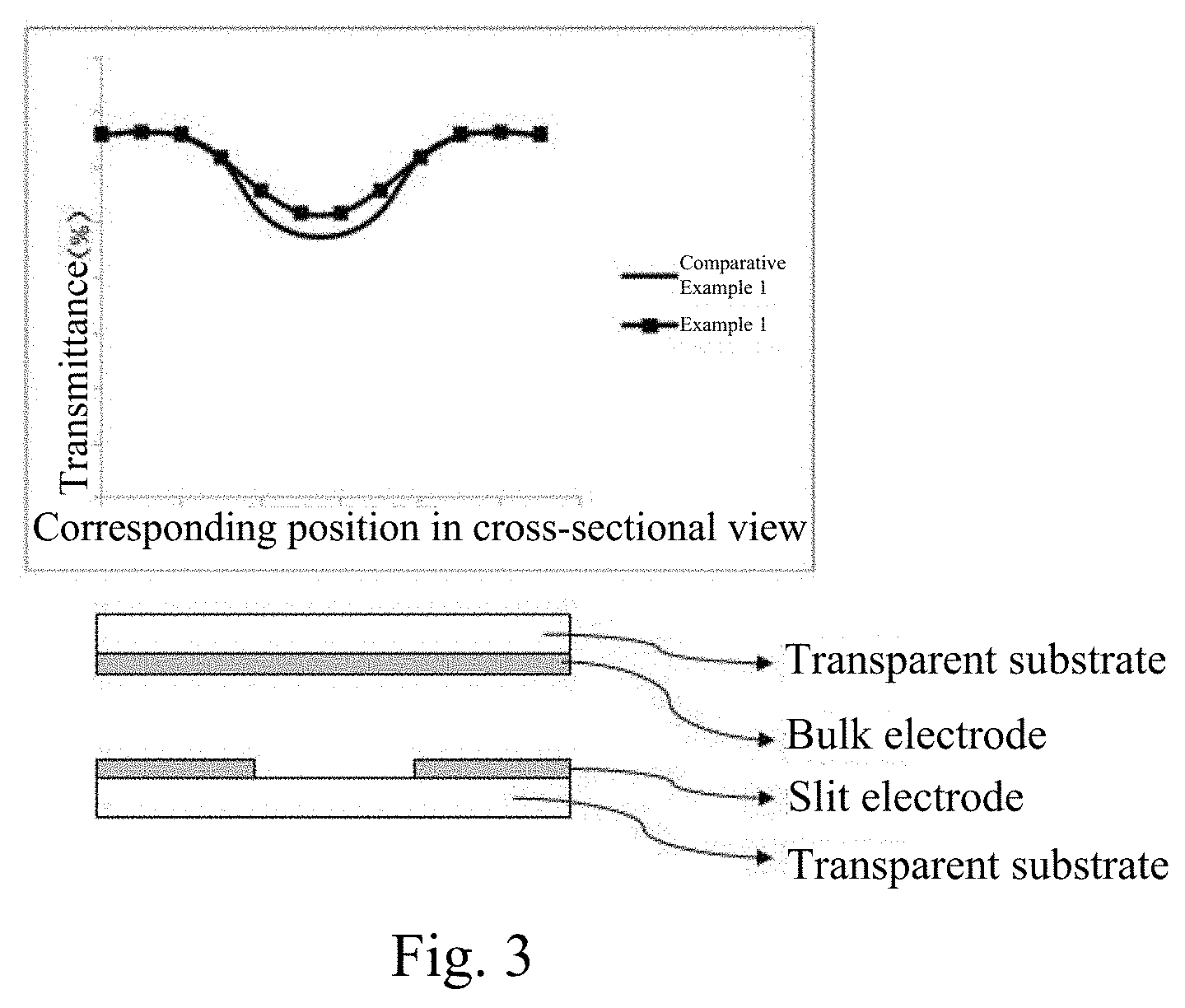
XML
uspto.report is an independent third-party trademark research tool that is not affiliated, endorsed, or sponsored by the United States Patent and Trademark Office (USPTO) or any other governmental organization. The information provided by uspto.report is based on publicly available data at the time of writing and is intended for informational purposes only.
While we strive to provide accurate and up-to-date information, we do not guarantee the accuracy, completeness, reliability, or suitability of the information displayed on this site. The use of this site is at your own risk. Any reliance you place on such information is therefore strictly at your own risk.
All official trademark data, including owner information, should be verified by visiting the official USPTO website at www.uspto.gov. This site is not intended to replace professional legal advice and should not be used as a substitute for consulting with a legal professional who is knowledgeable about trademark law.